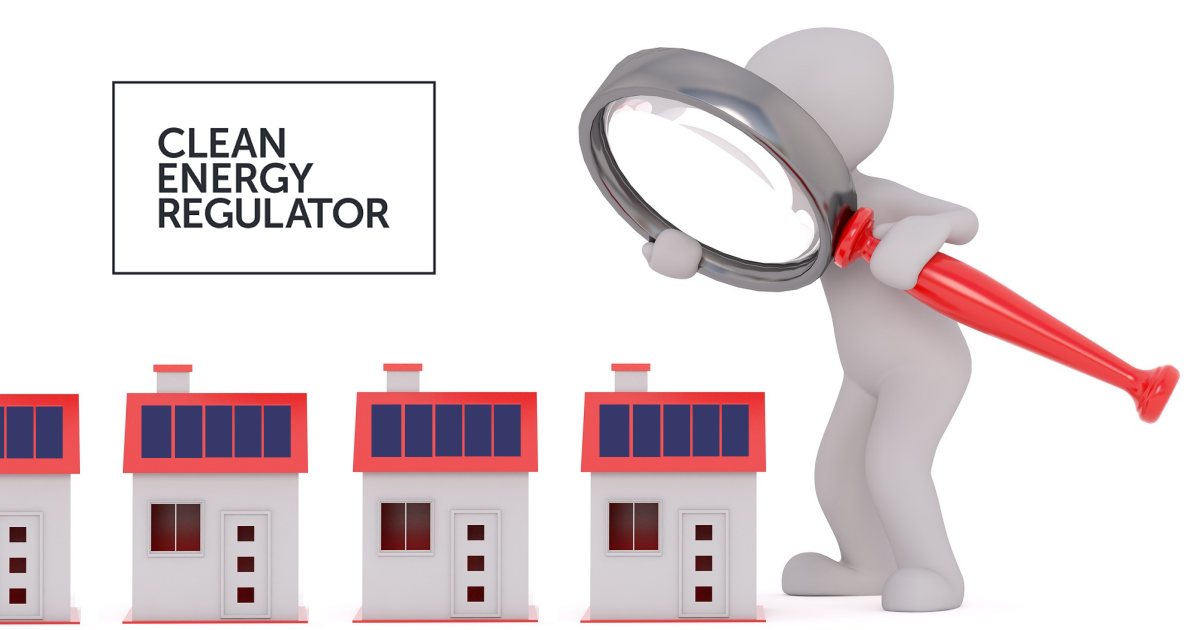
The Clean Energy Regulator’s 2019-20 Annual Report tabled last week indicates it was another busy year for the CER.
Among its responsibilities, the Regulator oversees programs operating under Australia’s Renewable Energy Target; one of which is the Small-scale Renewable Energy Scheme (SRES). The SRES is the mechanism that provides Australia’s solar subsidy, often referred to as the “solar rebate“.
STC Numbers Skyrocket
The Clean Energy Regulator validated 40,267,622 small-scale technology certificates (STCs) in 2019-20 compared with 33,265,332 validated in 2018–19. STCs are tradeable virtual bits of paper that form the basis of Australia’s solar rebate. The number of STCs a system is eligible for depends on the size of the system, the installation location and when it was installed – you can use SolarQuotes’ STC calculator to determine how many certificates accompany a system.
STC value fluctuates with market conditions and is usually provided as a point-of-sale discount by a solar business rather than solar buyers having to mess around with navigating the certificate system after a system is installed.
As at the end of the financial year, more than half of STC applications used solar panel validation, which is performed by an installer using a phone app to scan solar panel serial numbers just prior to installation. Applications using this are processed much faster – within around 24 hours compared with four to six weeks for those that don’t. As well as speeding up claims, solar panel validation helps protect consumers, installers and manufacturers by confirming the solar panels being used are genuine and eligible for the rebate.
Solar System Inspections
Each year, the Regulator carries out inspections of rooftop solar systems to check on conformance with Small-scale Renewable Energy Scheme eligibility requirements, relevant Australian standards and the electrical safety standards of the relevant state or territory.
Over the 2019-20 period, 2,564 solar power systems were inspected. Of these:
- 79.8 per cent were found to be compliant
- 18.6 per cent were assessed as being “substandard”. The Regulator notes this classification doesn’t mean the whole system is substandard. Typically, one or two defects are found in the installation that don’t affect the system’s performance.
- 1.6 per cent were assessed as unsafe or potentially unsafe.
Blasted Rooftop DC Isolators
In terms of unsafe or potentially unsafe installations, the Regulator notes the most common issue was water ingress into DC isolators, particularly the isolator on the roof.
A rooftop DC isolator is manually operated switch that shuts off DC current between the solar array and the solar inverter. While intended to be an additional safety feature (isolator switches are also at ground level next to the inverter), they have turned out to be a potential safety risk when poor quality components are used, isolators are installed incorrectly or where maintenance is not kept up. Last month we reported on another instance of a rooftop DC isolator catching fire.
Australians having solar power systems installed can’t choose to forego a rooftop DC isolator at this point. They are still currently required in Australia and we appear to be the only country in the world with this requirement. There has been a push for some years to have the requirement removed from the AS/NZS 5033 Standard and it’s high time this was acted on by the powers-that-be.
During the 2019-20 period, the Regulator published the Small-scale Renewable Energy Scheme residual systemic safety risks report that also highlighted DC isolators as being the most common culprit in the cases where rooftop solar systems were considered potentially unsafe.
The above are just a couple of highlights from the 174-page report on the Regulator’s activities in 2019-20. The full report can be viewed here.

 RSS - Posts
RSS - Posts



Speak Your Mind